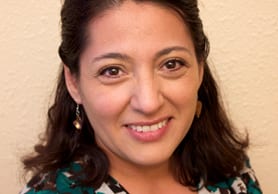Many of us have been taught orthopedic protocols for different issues but do not understand how to determine when and if to use said protocol.
Learning how to properly and thoroughly assess the issues of your clients is one of the most important skills you can develop as a massage therapist.
As members of the Human Species there is a specific design to the body that allows us to bear weight through our spine, lower extremity joints and long bones, and into specific areas of our feet. When we are able to achieve this postural pattern we put less stress into the soft tissues of the body that are not particularly meant for weight bearing. We can stand and move about freely with grace and efficiency. Unfortunately, these areas are often used inefficiently and therefore create in stability in the body versus mobility or flexibility. This can result in soft tissue strains, sprains, fascial restrictions, joint or vertebral disc trauma. Eventually this can lead to discomfort, chronic pain, compensations or dysfunctions and inactivity.
Through keen observation and sensing tension patterns in the musculoskeletal system, we as massage therapist can either prevent problems or restore integrity to the soft tissue.
Much of what we observe can be confirmed from information gleaned during the history taking portion of your interview. This information comes from the individual and reflects his or her attitude, mental condition, and perceived physical state. This will include information such as history of the injury, includes the primary complaint, mechanism of injury, characteristics of the symptoms and related medical history. This is the Who, What, Where, When and How of your interview. Taking a proper history is crucial in determining the nature of soft tissue injuries. The history should be much more thorough than a standard set of questions about indications and contraindications.
As far as structure is concerned, it’s important to remember that NO ONE IS PERFECT! What is important to recognize is whether a deviation from and established norm is significantly dysfunctional as to be a cause of some type of soft-tissue pathology. When we educate our clients in correct use of their bodies as we see them sit, stand and move about in our offices, we can help them reduce postural problems that are developing or occurring.
The goals of this workshop is to provide massage therapists more advanced interviewing skills and visual assessment of the body from the perspective of the following:
- History taking
- Observation
- Palpation
- Special orthopedic testing
You will develop a keen understanding of the importance of H.O.P.S. in developing a treatment plan for your clients with the lecture and hands-on practice provided in this workshop. It’s all about the way we change our thinking. Every time we assess a client, it is a mystery to be solved!
Learn more at the Structural Assessment Skills workshop with Tammie Culley on October 3-4. CLICK HERE to register today!


